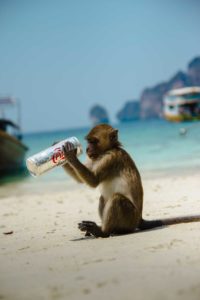Tourism in all its forms can have positive and negative impacts on the communities it reaches. This can be seen with the case of the GMS. Tourism as an industry can provide sizeable benefits at all levels of society. Direct income from visitor spending can bring economic benefits to locations with tourism experiences and as such can support conservation of local communities and heritage. The inflow of foreign currency contributes to household income, increases employment and government revenue. Much of that money is spent within the local economy creating further rounds of economic activity, meaning not only the initial visit by an international tourist, but their lasting impact can bring benefits to those visited.
Tourism can stimulate investments into local infrastructure and services, and provide a source for enterprise development and employment creation. Utilities such as highways or airfields, developed for the tourism industry are also available for local people and can provide access to wider markets for locally produced goods and services. Furthermore, the creation and maintenance of these facilities provides work for local residents. (Ruhanen, Cooper & Archel, edited by Theobald, 2005)
There exists both a direct and indirect interaction between visitors, host communities and the local environment in the delivery and consumption of tourism. However, this interaction is not always positive, it is important to make all stakeholders aware of the negative impacts tourism can have, and how best to minimize these.
One challenge is that tourism can lead to competition and overconsumption of scarce resources. Land is required for tourism purposes and that often forces prices up. Local landowners and farmers are encouraged to sell their land which leads to short-term gains but leaves locals without a means of income and has wider economic effects on their communities.
Whilst the tourism industry indisputably creates jobs, it is often the case that the highest paying of these are given to people, who are not part of the communities, leading to a split in the community and the risk of spreading inequality. At the same time it may lead to decreased local involvement in decision making and the subsequent disenfranchisement of local communities.
 Tourism can also create inequalities among different regions. Incentives offered to develop tourist hotspots come at the cost of other, often rural, regions. One problem is the unequal resource allocation among different areas. As investment into gateway cities continues to rise at much faster rates than rural parts, indigenous people are increasingly obliged to migrate from the underfunded countryside into large cities to seek a higher standard of living. This puts additional strain on newly developed resources. It is most often younger generations that leave the countryside in search of employment in cities, leaving an increasingly aged rural population in an even worse state of deprivation as they are unable to maintain local institutions and businesses. There is an additional social impact to this mass movement, as traditional cultures which thrived most prominently in rural areas are being neglected.
Tourism can also create inequalities among different regions. Incentives offered to develop tourist hotspots come at the cost of other, often rural, regions. One problem is the unequal resource allocation among different areas. As investment into gateway cities continues to rise at much faster rates than rural parts, indigenous people are increasingly obliged to migrate from the underfunded countryside into large cities to seek a higher standard of living. This puts additional strain on newly developed resources. It is most often younger generations that leave the countryside in search of employment in cities, leaving an increasingly aged rural population in an even worse state of deprivation as they are unable to maintain local institutions and businesses. There is an additional social impact to this mass movement, as traditional cultures which thrived most prominently in rural areas are being neglected.
Another very real criticism of the way in which much tourism is recently being conducted is that it is exploitative. Numerous reports exist of indigenous peoples being commercialized and exploited for private profit, in more extreme cases they are being displaced or harmed in order to develop a seemingly more tourist friendly destination (Coronado, 2014). Members of these cultures are being sold out for tourists’ satisfaction and enjoyment (Ramer, 1999). This commercialization may happen in all types of tourism experiences, from sites of cultural heritage to tribal villages and natural monuments. It is also the case that crime, drug trafficking, prostitution and gambling can all be linked in some manner to tourists and their activities.
Given the negative impacts tourism can have it is important to minimize and mitigate them as much as possible – to conduct tourism in a responsible and sustainable manner. With realistic planning and regulations, it is possible to avoid conflicts of interest. Resources must be allocated carefully to ensure tourists, and the benefits they bring, are spread as evenly as possible – in time and place.



